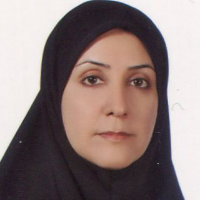Collation number four, Jim & Jam- e- Jim on elements of Al Tariagh- honored portrait in relation to new day of holy period in a New Year on the basis of decoding on Mircea Eliade thinking
Author(s):
Article Type:
Research/Original Article (دارای رتبه معتبر)
Abstract:
Pay attention to time as old holy case on New Years' of New Day custom as always considered in Iran's ancient culture. It seems that the results of this religious act in Islamic period can be observed in Al Tariagh- book portrait. The question is how holy time of New Years' holy day communicate with Al Tariagh- honored portrait. Librarian study first was used in this study. In this article coding language is regarded & coding language is companied with Mircea Eliade paying attention to cosmology in the life of ancient human is the goal of using coding language. This human has lived in ancient society of Iran. Holy percepts can be recognition through surveying cosmology. Then it analyzed the cases considered holy like number four , Jim, Jam- e- Jim, Jam's container and the color of it relation to holy time that stated favorable ideas. It tried to adapt those cases on pictorial elements of portrait that was the second goal of the study. So when the holy time of the New Year compared with shapes and elements of image, those shapes become saint. This holy goal contained some revitalization in ancient time that it has been the time related to the beginning of creation of everything in the word for example the creation of humans, things and concepts. On the New Day of the New Year the eternal or ancient time has been repeated and has influenced life affairs like number four, Jim, his Jam and Jam's container. These affairs had harmony with elements of portrait.
Keywords:
holy time , number four , Jim , Jam- e- Jim , Al Tariagh' , s portrait
Language:
Persian
Published:
Journal of Negarineh Islamic Art, Volume:7 Issue: 20, 2021
Pages:
69 to 83
https://www.magiran.com/p2316037
سامانه نویسندگان
مقالات دیگری از این نویسنده (گان)
-
Reading glorification face and flattery in visual repercussion of the two artworks attributed to honored custom eulogy in Iranian culture
Najaf Abadi*, Marzieh Piravi Vanak, Zohreh Tabatabaei, Jalil Jokar
Bagh-e Nazar, -
Comparative studying about proofs of “ancient petro glyphs and samples ofIslamic Persian Painting” for recognizing of heightened in eulogy
Najaf Abadi
Journal of Negarineh Islamic Art,


